#Gwangyang
Explore tagged Tumblr posts
Text

Gwangyang industrial complex - South Korea
363 notes
·
View notes
Text

POSCO Steel, Gwangyang industrial complex (Google maps)
Read: Simultaneous Exposure to Heavy Metals among Residents in the Industrial Complex: Korean National Cohort Study (Researchgate)
Watch: Gwangyang Bay Area Free Economic Zone PR film English Version (Youtube PR clip)
Watch: Recovery of Posco steel after typhoon Hinnamnor (Youtube)
0 notes
Text




230624 dancingurangdan IG: 빛나는 보아의 무대 in 광양
TRANS: BoA shining onstage at Gwangyang 📸
#boa#boa kwon#ig: dancingurangdan#ig post#ig#p#2023#stills#only one#dancing queens on the road#dqotr gwangyang 2023#230624#230416
16 notes
·
View notes
Text

The Gwangyang Steel Works in Gwangyang, South Korea is the largest facility of its kind in the world. It outputs an average of 18 million tons of steel per year, producing parts for bridges and other infrastructure, cars, refrigerators, and more. The plant even serves as a tourist attraction, receiving hundreds of thousands of visitors from around the world.
34.914935°, 127.740139°
Source imagery: Maxar
2K notes
·
View notes
Note
can you write bully heeseung (or any other member if you want) with reader? like he is always nice to everyone and no one believes that someone as sweet as him would bully someone. but he bullies reader a lot and actually likes her. can you also make him like REALLY mean if you can
Thanks for requesting!!!!
In the bustling halls of Gwangyang High, Heeseung was adored by all. His smile was as radiant as the sun itself, his charm captivating. To everyone else, he was the epitome of kindness, but to you, he was a venomous presence, a yandere masked in sweetness.
Despite the facade, his affection for you was twisted, expressed through cruel taunts and relentless bullying. You were the only one who saw through his façade, the only one to witness his true nature.
Every day was a new torment orchestrated by Heeseung, his words cutting deeper than any blade. Yet, amidst the pain, you refused to see his actions as anything but cruel and unjustifiable. You saw no affection in his twisted behaviors, only malice.
"Why do you do this to me?" you demanded one day, your voice trembling with anger and frustration as you confronted him after another round of humiliation.
Heeseung's smile remained unnervingly calm as he looked at you, his eyes gleaming with a possessive fervor. "Because, darling, you belong to me. And I won't let anyone else have you."
His words sent a chill down your spine, the implications of his possessiveness filling you with disgust. You refused to be anyone's property, least of all his.
As the days turned into weeks, and the weeks into months, the torment only seemed to intensify. Heeseung's jealousy grew into a consuming obsession, his actions becoming increasingly erratic and dangerous.
One day, after catching you talking to another boy, Heeseung's jealousy erupted into violence. He cornered you in a deserted hallway, his fists clenched with rage as he advanced towards you.
"You think you can talk to other guys behind my back?" he spat, his voice dripping with venom as he grabbed you roughly by the collar. "I'll make sure they never look at you again."
With a sickening sense of dread, you realized the depth of Heeseung's obsession. His love was not sweet, but poisonous, a dangerous obsession that threatened to consume everything in its path.
"Please, Heeseung, stop," you pleaded, your voice barely above a whisper as you struggled against his grip.
But Heeseung's rage knew no bounds. With a vicious snarl, he delivered blow after blow, each one landing with the force of a sledgehammer.
As you lay bruised and broken on the cold tile floor, Heeseung leaned in close, his breath hot against your ear. "Remember this," he whispered, his voice low and menacing. "If you ever so much as look at another guy again, I'll kill them. And then I'll kill you."
Tears stung your eyes as you watched him walk away, his footsteps echoing ominously in the empty hallway. You were trapped, caught in the tangled web of his twisted love, with no hope of escape.
But deep down, beneath the fear and despair, a spark of defiance flickered to life. You refused to be a victim, refused to let Heeseung's cruelty define you.
And so, with each passing day, you vowed to fight back against the darkness that threatened to consume you, to break free from the shackles of Heeseung's toxic love, and reclaim your life from the sweet venom that had poisoned it.

#enhypen#enhypen scenarios#enhypen story#enhypen fic#enhypen yandere#soireegurl#yandere#heeseung yandere#enhypen heeseung#heeseung#heesung enhypen#lee heesung x reader
100 notes
·
View notes
Text
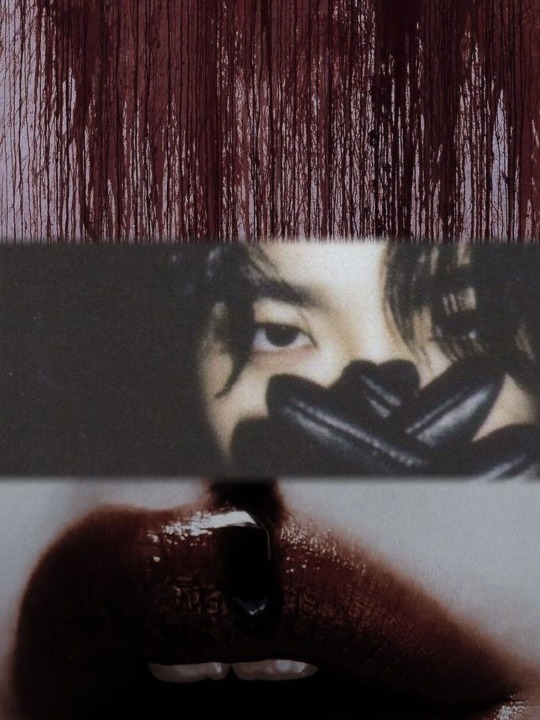
SPLIT:
Yandere Seonghwa × Fem Reader
WARNING : Contrains the following:
Kidnapping
Vulgar and extreme language
Gruesome Murder
Physical Abuse
Mental Abuse
Illegal Drug usage
Heavy Alcohol consumption
Stalking
BDSM
HARDCORE SMUT
Extreme Mental illness
Seonghwa is absolutely batshit crazy....
Reader's Discretion is Advised.
3 years after the horrific Yuru Hana Academy school murders, Y/N being the only victim to escape with her life, she relocates to a large city to attend university to start anew. As she adjust to her new life, finally free of the petrifying past. A sadistic serial killer is now active in the city. The Split Murderer resurfaces possibly finish what was left unfinished…. Her
CHAPTER I:
“Breaking news: the mass serial killing spree that has shook the nation of South Korea has finally came to end in YuruHana Academy in the remote area in Southern South Korea. The Split Killer, 36 year old Minato Kobayashi a Japanese native and a former teacher at Yuru Hana Academy has been captured at the crime scene and was arrested and is being charged with the 18 murders known as the split murders. The sole survivor, 16 year old Song Y/N was found alive, naked bound and chained inside the abandoned Gonjibam Psychiatric Hospital 30 kilometers outside the town of Gwangyang-si. When police arrived, they discovered 4 bodies of students of Yuru Hana Academy that were dismembered. Police investigating the incident stated Kobayashi has a history of severe mental illness and when police raided his home found child pornography and photos of the students whom he targeted. The police are not releasing any further information as the investigation continues. We will keep you all updated on this horrific and tragic situation. I’m Yang Haneul and this is Seoul Channel 8 news.”
3 Years Later:
“Hi mom, sorry I couldn’t visit last month, I was preparing to move to start university. I wish you were at the graduation, but I know you were watching me from heaven. I might not be able to visit often, but I wanted to come and say I love you and I miss you, also happy birthday. Thank you for the life you gave me, even though I made some horrible decisions. Please forgive me and watch over me.” I said as I laid a bouquet of roses onto my mothers final resting place. Sending my final prayers, I stood up brushing the dirt off my jeans.
It’s been a year since her passing. Every month I came by to talk to her, despite being one sided.
Strolling through the graveyard I made one last visit to my friend, Yuki.
Seeing her small yet elegant memorial, her picture from when we were sophomores in high school. Her short black hair, radiant smile. “Heeeeey Yuk. It’s me y/n. How’s Heaven? Must be better than this shithole. Anyways I wanted to stop by and say I finally graduated!” I whispered, holding back tears. “I miss our crazy adventures, I miss our sleepovers, I miss the way we would skip class and go eat sushi by the lake.” The tears began to flood down my cheeks. “I’m so sorry that I got you into this mess, but they got him. They got Mr. Kobayashi. He’s being executed but don’t worry, you won’t be able to see him, he’s not making it to heaven. He’s going directly to hell. I know it sounds bad, but I did schedule a meeting with him before he’s hung. I hope to get an answer to why. Anyways I’m moving to the big city to start university. I’ll try to come visit sometimes. I love you, I miss you.”
It’s been 3 years since that dreadful night.
A night that would change my life forever.
A night I can never forget.
A night I can’t understand why.
3 years ago:
“Y/N I-I don’t know about this…” Yuki said grabbing right of my arm. “This place is creepy. So many people went missing here.”
I chuckled, “cmon YukYuk that’s just a story people told us to not come here. It’s just an old loony bin. Nobodies been here for ages. Doubt anybody goes missing here in broad daylight.”
We explored the old insane asylum as we ditched class to avoid the calculus test. Scattered rusted beds littered the hallways. Exploring around we find file cabinets ripped open with files empty of what was once filed with patient’s information.
We explored deeper into the building heading downstairs to what appeared to the maximum security area. Beds with straps, broken monitors and a feeling of despair.
“Y/N look!” She gasped. I turned to see what looked like blood. I stepped forward and examed the dark red fluid. A unsettling feeling filled my body. Something isn’t right. I crept forward to see where the liquid was coming from. “Y/N we should really go. I have a bad feeling about this. Please!”
I ignored her, curiously took over.
Slowly I walked, my shoes clicking, echoing off the dead walls.
I shrieked and fell backwards.
There it was, a body sawed in half. I dropped my flash flight and scurried. “We gotta go!” I panicked. Yuki ran to see what I was seeing.
She quickly covered her mouth to silence her scream. There lied Minho. Sawed in half. Eyes wide looking into the ceiling.
We began to race off the building but was stopped when I loud bang halted us.
The large door of the max security area locked us in.
Trapped.
Loud, slow footsteps echoed from afar. “We need to hide!” I whispered, tears running down my face. We took off our shoes and dashed to find a dark hiding spot.
A dark eerie humming began to ring through the area.
Hearts racing I held Yuki’s hand. ‘God if you exist, please save us!’ I kept repeating in my head.
Me and Yuki hid in a dark nurses room underneath the desk. Holding each other tight in silence. The humming and footsteps got louder and louder.
Each step shook my heart.
“My love, my love, please do not be afraid, my love, my love, everything will be okay.” The deep voice sang.
Yuki began to sob, I placed my hand over her mouth, “shhhh please!” I pleaded.
The singing got louder and closer. “My love, my love, can’t you see, my love, my love, you belong to me.”
Time passed as the tension began to build.
The man kept singing and singing and then it the singing went silent. We stayed hidden under the dark desk, thinking he was gone.
“I know you’re hiding in here.”
My heart sank, eyes widened. Biting my lip, breaking the skin, bleeding to hold in my sobs. Me and Yuki remained quiet.
The heavy footsteps began to roar as it got closer and closer to where we were. Tucking our bodies tight, praying he won’t notice us hiding.
“My love, my love, please don’t be scared, Y/N, Y/N I’m the only one who cared.”
The man was standing right in front of the desk.
“Found you!”
He grabbed Yuki’s leg, dragging her.
“NO PLEASE! LET ME GO! Y/N! HELP ME!”
I scurried from the desk, “YUKI!” I screamed.
*WHACK!*
Everything went black……
Chapter II and III comes Monday at 20:00 EST!!!
Writing isn’t my best thing, but I would love feedback and suggestions! Love you guys!!!! 🫶🏻🫶🏻🫶🏻🫶🏻
19 notes
·
View notes
Text
The History of Korean Male Soloists from the 20th Century: Episode 2/?
The second episode of 'The History of Korean Male Soloists from the 20th Century' focuses on notable Korean artists who gained recognition in the early 20th century, a time marked by Japanese occupation.
The documentation surrounding these artists is often inconsistent, primarily because their activities took place nearly a century ago, prior to the Korean War, which resulted in the loss or inaccessibility of historical records.
Lee Eun Sang (이은상; 李殷相)
Lee Eun-sang was initially referenced in Part 3 of 'The History of Korean Male Groups' for his contribution as a lyricist for the "Boat Song," which was performed by the Yonhui College Choir and composed by Hyun Je-myeong (현제명; 玄濟明). He also penned the lyrics for "Watermill" and "Jeolumbari," both of which were composed by Hyun Je-myeong as well.
Lee Eun Sang (이은상), born on October 22, 1903, and passing on September 18, 1982, hailed from Jeonju but spent much of his life in Masan, Gyeongnam. He was the second son of Lee Seung-gyu (이승규) and adopted several pen names, with Nosan (노산;鷺山) being the most prominent, alongside Namcheon (남천; 南川), Gangsan Yuin (강산유인; 江山遊人), and Duwooseong (두우성;斗牛星).

As a distinguished South Korean sijo poet, historian, and honorary doctor of literature, Lee Eun Sang produced significant works including the 'Nosan Sahwa Collection,' 'Nosan Sijo Collection,' 'Nosan Poetry Collection,' 'I Want to Go,' 'Night at Seongbulsa Temple,' and 'Climbing the Old Hill.' His contributions to the arts were recognized with several accolades, including the Arts Academy Merit Award, the 5/16 National Award, and honours from the Arts and Culture Division.
Life and Activities
He completed his secondary education at Masan Changshin School (昌信學校), an institution established by his father in 1918, and pursued studies in the liberal arts at Yonhui College (연세대학교; 延世大學校), although he is believed to have left the college in 1923. Between 1925 and 1927, he attended Waseda University (와세다 대학; 早稲田大学) in Japan, where he audited courses in the Department of History.
In 1931, Lee Eun Sang began his academic career as a professor at Ewha Womans College (이화여자대학교; 梨花女子大學校). He later took on leadership roles, including the presidency of Honam Shinmun in 1945, and continued to teach at various institutions such as Cheonggu University, Seoul National University (서울대학교), and Yeungnam University (영남대학교; 嶺南大學校) after 1950. Additionally, he held presidencies in several cultural organizations, including the Korean National Culture Association and the Korean Sijo Writers Association, as well as the Korean Mountaineering Club (한국산악회), which was founded in 1945.

Prior to Korea's liberation, he was an active participant in the National Literature Faction and was arrested during the Joseon Language Society Incident (조선어학회 사건; 朝鮮語學會事件), which involved the Japanese authorities detaining members of the Korean Language Society in 1942. His literary contributions began in the early days of the Joseon Literary World (조선문단) magazine, and despite being imprisoned at Hongwon Police Station and Hamheung Prison, he was released the following year. In 1945, he faced detention at Gwangyang Police Station under a preliminary arrest warrant for thought crimes but was freed following Korea's liberation.
Following his liberation, he produced a substantial body of work across journalism, academia, and historical writing. His explorations of the country resulted in numerous travelogues, and he gained recognition as a researcher of Admiral Yi Sun-sin (이순신; 李舜臣). In 1954, he was elected to the National Academy of Arts and subsequently became the president of the Chungmugong Admiral Yi Sun-sin Memorial Association in 1959. His leadership extended to the National Culture Association and the Ahn Jung-geun (안중근) Admiration Association in 1965, where he dedicated efforts to honour significant national figures. Notably, he contributed to the founding declaration of the Democratic Republican Party in 1963.
He earned both his master's and doctoral degrees in Korean language and literature from Kyunghee University (경희대학교; 慶熙大學校) in 1970, followed by an honorary doctorate in literature from Yonsei University in 1974. That same year, he assumed the role of chairman of the National Council for Total Security and became the lifetime chairman of the Sijo Writers Association. His accolades included being named a lifetime member of the National Academy of Arts in 1978 and serving on the National Advisory Committee on Government Administration in 1981. His contributions to the arts were recognized with several awards, including the National Academy of Arts' Merit Award and the May 16 National Award.

His literary legacy includes popular sijos such as “Gagopa” (가고파), “The Night of Seongbulsa Temple” (성불사의 밤), and “Going Up the Old Hill” (옛동산에 올라), alongside significant publications like “Nosan Sahwajip” (노산사화집), “Nosan Sijojip” (노산시조집), and “Yi Chungmu-gong Chronicles” (이충��공 일대기). Throughout his life, he was committed to the dual pursuits of sijo poetry and fostering national consciousness. In 1982, he was appointed as an advisory member of the State Affairs Advisory Council (Another link about this Council), but he passed away later that year, leaving behind a rich tapestry of cultural contributions.
He additionally composed the lyrics for the commemorative song dedicated to Mr. Kim Gu (김구) and President Park Chung-hee (박정희).
His Work
In 1921, the poem "Blood Tide" was published in the fourth issue of "Ahseong" (아성) under the pseudonym Du Woo-seong (두우성), marking the beginning of his literary career. However, it was not until the establishment of "Chosun Literature" in 1924 that he fully engaged in literary activities. Throughout this magazine, he contributed numerous critiques, essays, and poems, although he largely overlooked traditional national studies and sijo, favouring Western free verse instead. During this period, he produced approximately thirty free verse poems, in stark contrast to just one sijo.
His critical writings from this era include notable titles such as “A Study of Poet Whitman,” “Tennyson’s Four Poems,” and “Lectures on the History of British Poetry,” with significant contributions appearing in "Chosun Literature" and "Dong-A Ilbo." These works reflect the literary landscape of the time and his engagement with Western literary traditions. However, by the latter half of 1926, as discussions surrounding the revival of sijo gained momentum, there was a noticeable shift towards traditional literature and national studies.

Lee Eun Sang (이은상)– Nosanmunseon (노산문선)
Between 1929 and 1930, he published several poems that incorporated folk song rhythms, including “Sae Taryeong” (New Song), “Maehwadong” (Selling Flowers), and “Joseon’s Flower” (Flower of Joseon). In addition to his poetry, he also contributed to the field of criticism with works such as “A Brief Study of Cheongsang Folk Songs” and “The Life and Art of Hwang Jini.” This period marked a significant evolution in his literary focus, as he began to embrace traditional forms alongside his earlier Western influences.
The poet's sijo reflects a deep intertwining of admiration for his homeland, its natural landscapes, traditional Eastern sentiments, and the Buddhist notion of impermanence. His profound affection for his country and its people manifests with an intensity akin to religious fervour. The simplicity and authenticity of his language resonate with a broad audience, contributing significantly to the resurgence of the sijo form.
Initially, he regarded sijo as inferior to literature, only embracing it as a legitimate literary form following discussions surrounding its value. Despite this initial scepticism, he engaged in writing both free verse and sijo for a period, ultimately establishing himself as a prominent sijo poet by the late 1930s. His journey into this genre marked a significant evolution in his literary identity.
In addition to composing sijo, he also translated Tang poetry into this format, thereby enriching the genre and expanding its theoretical framework. His contributions not only enhanced the sijo tradition but also demonstrated the versatility and depth of this poetic form, bridging cultural and literary boundaries.

Lee Eun Sang (이은상) – Nosan Sijo Collection (노산시조집)
In his essays featured in the Dong-A Ilbo, including “The Problem of Sijo” (April 30–May 4, 1927), “A Brief Discussion of Sijo” (April 18–25, 1928), and “The Problem of Sijo Creation” (March 30–April 9, 1932), the author sought to clarify the standard structure of sijo through pitch rather than syllable count. His inaugural personal collection, “Nosan Sijo Collection,” released in 1932, embodies themes of nostalgia, appreciation, transience, and reverence for nature.
Notable pieces such as "Thinking of Hometown," "I Want to Go," and "Night at Seongbulsa Temple" have gained popularity as songs, reflecting the simple and melodious qualities of sijo. Following liberation, his focus shifted towards social themes, emphasizing national pride, the anguish of division, aspirations for reunification, and honouring patriots. This thematic evolution culminated in the 1958 collection, ‘Nosan Sijo Anjip’, particularly in works like 'The Meaning of the Blue Sky' (1970) and his final compilation, ‘Giwon’.
His approach to sijo included an attempt to simplify the form by experimenting with the two-chapter sijo (兩章時調), although later in his career, he tended to increase syllable counts. As a historian and essayist, he utilized his extensive historical knowledge to produce numerous travelogues and biographies aimed at fostering patriotism. Post-liberation, he prioritized social contributions over literary pursuits, leaving behind a substantial body of work, including poetry collections like ‘Nosanmunseon’ and ‘Nosansimunseon’, the essay collection ‘Musang’, and over 100 books, including his biographies such as ‘Journal of Tamna Traveling Hal’.
Awards and Remembrance
Lee Eun Sang's funeral took place as a public event, culminating in his interment at the national cemetery. A commemorative monument, known as 'Gagopa Songbi' (가고파 송비), was established in Masan to honour his ancestors. In recognition of his contributions, he was posthumously awarded the Order of Merit for National Foundation in 1990.
5 notes
·
View notes
Text
youtube
[VIDEO] 20240619 Andy - Where am I? South Jeolla Province’s Gwangyang, a city that shines brightly both during the day and at night
전남관광TV
2 notes
·
View notes
Text
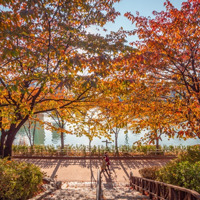

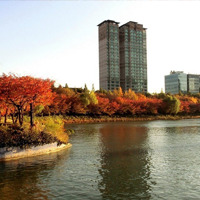

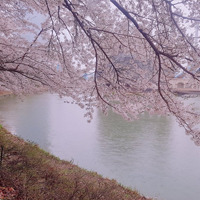





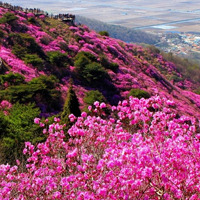

┊X Korea Unveiled: El Parque del Lago Seokchon
En primavera, Corea del Sur se viste de rosa y blanco para crear un espectáculo visual capaz de deleitarnos a todos. Por ello, hoy hablaremos de un lugar mágico e ideal para disfrutar de esta época del año y hacerla inmemorable.
Ubicado en el distrito Songpa, el Parque del Lago Seokchon es uno de los lugares más conocidos de Seúl, ya que destaca por la belleza que lo acompaña y por la tranquilidad que se puede respirar en el ambiente. El lago está rodeado por un sinfín de senderos para caminar, que nos permiten disfrutar así mismo de la naturaleza que convierte el lugar en uno más mágico. El parque cuenta con áreas de descanso y zonas de picnic, ideales para relajarse y para tener una cita al aire libre.
Este parque está dividido en dos lados: el lado este y el lado oeste. Cuenta con varias instalaciones culturales y recreativas. En sus alrededores también puedes encontrar restaurantes, cafeterías y tiendas, así como el Lotte World.
¡Pero eso no es todo! El Lago Seokchon también cuenta con un festival anual de flores de cerezo en el que podrás disfrutar de muchos conciertos y pequeñas actividades. Pero no te preocupes, que si te pierdes este festival hay muchos más, como por ejemplo:
Festival de la Flor de Loto en Buyeo: No solo tendrás la suerte de admirar de cerca las flores de loto, sino que también podrás disfrutar de las actividades recreativas y de la degustación de comida local.
Festival de la Flor de Azalea en Goryeosan: Si prefieres algo más de movimiento este es tu festival, ya que podrás disfrutar de una variedad de senderos para caminatas que te ayudará a conocer la montaña y admirar sus paisajes.
Mugunghwa Festival: Destacan sus tours y excursiones guiadas, donde exploran áreas en las que el Mugunghwa florece en abundancia.
Hahoe Mask Dance Festival: Como su nombre indica, este festival se centra en la danza de máscaras, una forma de arte tradicional que se usa para representar diversos personajes y situaciones, contribuyendo de esa manera a que sigan aprendiendo sobre su historia y tradiciones.
Gwangyang Maehwa Festival: Destacan sus eventos culturales, como presentaciones de música tradicional, bailes folclóricos, demostraciones de artesanía local y más.
¿A qué estás esperando para visitarlos? No dudes en unirte a F3 para poder visitar todos estos lugares. ¡Te esperamos! Fight For Freedom.
#Korea Unveiled#fight for freedom#foro rol#fightforfreedom#foro#kpop rpg#rol#kpop#foro de rol#lago Seokchon#Seokchon#seoul#south korea#corea del sur
3 notes
·
View notes
Text

BASICS ++
birth name: yang yuni (양유니)
stage name: yuni (유니)
date of birth: may 8, 2002 (age 21)
zodiac: taurus
chinese zodiac: horse
birthplace: daejeon, south korea
hometown: gwangyang, south korea
ethnicity: korean
nationality: korean
language(s): korean (fluent)
PHYSICAL ++
height: 173cm (5’8”)
weight: 56kg (124lb)
blood type: B+
face claim: han shinyoung (h1-key)
CAREER ++
group: iDYLL
position: vocalist, lead dancer, rapper
agency: acid violet entertainment
training period: 1 year, 5 months
years active: 2023-present
#⠀/ fight for your fairytale >> yuni#⠀/ fight for your fairytale >> profiles#kpop oc#fictional idol community#fake kpop idol#fictional idol group#oc kpop gg
3 notes
·
View notes
Text

Gwangyang industrial Complex - South Korea
32 notes
·
View notes
Text
Hwasa: ‘I Get Angry When People Only Judge Me by Appearance’!
3 notes
·
View notes
Text
LaLaLi & Crylite profiles kind of
*mostly info given by game that's why some of it might sound weird
LALALI
> fan name: lilis
-> Lili (real name: Living Alone) 🐰/💎
- born 8/18
- korean (born in seoul)
-
hobby: saving money
specialty: working part time job
character: hard worker & genius
fan name:
-> Cooli (real name: Cha Jin Sun) 🦭/❄️
- born 6/1
- korean (born in seoul)
-
hobby: random dancing
specialty: being positive
character: refreshing & enthusiastic
fan name:
-> Bluli (real name: Hadarabo June) 🦢/🫐
- born 2/22
- japanese (born in osaka)
-
hobby: cosmetics collecting
specialty: skincare
character: visual & angel
fan name:
CRYLITE
> fan name: minny(s)
-> Steven (real name: Lee Jonghwan) 🐻❄️/🤍/🩶
- born 11/18
- korean (born in gwangju)
-
hobby: puzzle
specialty: sexy dance
character: heavy sleeper & serious
fan name:
-> Channi (real name: Lee Changduk) 🦊/🍬
- born 2/12
- korean (born in seoul)
-
hobby: playing mobile game
specialty: memorize bus map
character: peach & clear&cool
fan name:
-> Yasmin (real name: An Gyuhee) 🐭/🍒
- born 2/16
- korean (born in sacheon)
-
hobby: making slime
specialty: back walking
character: collector & lovely
fan name:
-> Tamara (real name: Jun Jisu) 🦁/🌻
- born 4/18
- korean (born in ansan)
-
hobby: french embroidery
specialty: yoga
character: sexy & singing ability
fan name:
-> Sohye (real name: Park Sohye) 🦇/🌹
- born 5/12
- korean (born in geoje)
-
hobby: watching kdramas
specialty: dancing
character: outsider & serious
fan name:
-> R.E (real name: Kuwahara Moriyori) 🐺/🍫
- born 6/30
- japanese (born in osaka)
-
hobby: shoes collecting
specialty: fencing
character: hiphop & serious
fan name:
-> Alex (real name: Gong Hangeul) 🐶/🍎
- born 10/9
- half korean, half white (born in seoul)
-
hobby: reading books
specialty: writing novel
character: english & refreshing
fan name:
-> Lyla (real name: Ma Mingyeong) 🐹/⭐️
- born 8/21
- korean (born in gwangyang)
-
hobby: claw machine game
specialty: modern dance
character: innocence & enthusiastic
fan name:
#monthly idol#looking back at this why didnt I name bluli juli instead#I really wanted her to have a blue hair thing lol#also lalali fan name 😭 why is it literally just lili but plural#I could change it but it feels weird doing it like 15 years later lol#placeholders for heights until I figure them out#emojis are also a wip as I add more lore to them#idk if you noticed but I added animals for lalali#individual fan names might also pop up since ik sometimes idols have those#but im not too sure about it
0 notes
Text

230624 dancingurangdan IG: 뜨거웠던 광양 콘서트📸
TRANS: The hot Gwangyang concert 📸
#boa#boa kwon#dancing queens on the road#ig: dancingurangdan#ig post#ig#uhm junghwa#lee hyori#kim wansun#mamamoo hwasa#hong hyunhee#p#2023#dqotr gwangyang 2023#230624#230416
0 notes
Text
Dam Assistance & Reconstruction
A high number of troops from the 6th Division were deployed to the city of Gwangyang. They carried out search and rescue operations, with engineering troops shall use machinery to clear the rubble. Medical assistance was also provided. POSCO is also providing construction assistance to rebuild the dam.
Hooray!
0 notes
Text
Gwangyang

Gwangyang adalah kotaindustri di Provinsi Jeolla Selatan, Korea Selatan.[1] Berjarak 90,1 km di tenggara kota Gwangju, 53 km dari kota Yeosu (Jeolla Selatan). Di sebelah timur berbatasan dengan Kabupaten Hadong dipisahkan oleh Sungai Seomjin. Di sebelah barat dibatasi dengan kota Suncheon dan sebelah selatannya terdapat Laut Selatan. Luas kota 441,97 km², dengan jumlah penduduk 150.000 orang.
0 notes